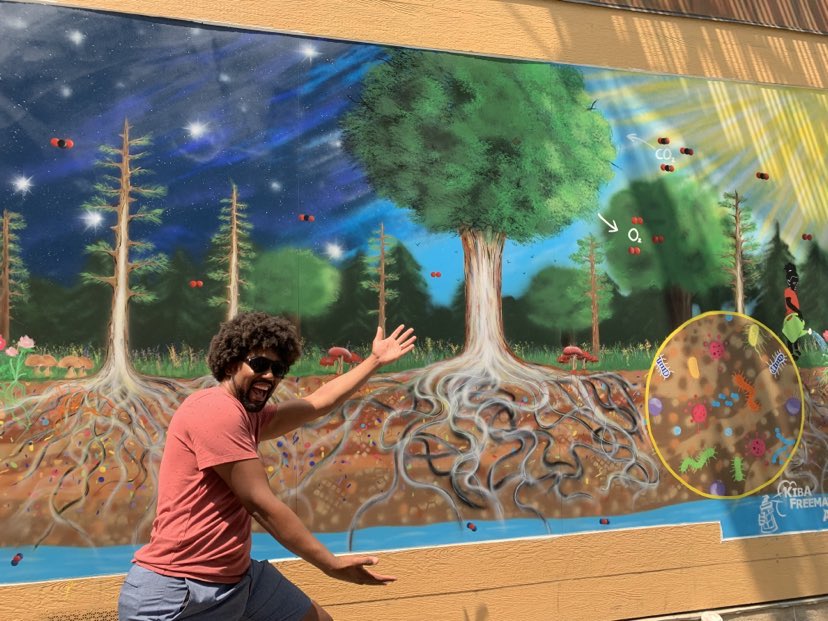
A new artistic collaboration sparked by the City of Madison and the University of Wisconsin-Madison saw the recent unveiling of a new mural this past weekend at 318 W. Gorham St.
Artist Kiba Freeman is the muralist who was chosen to do the piece on the carbon cycle in an effort to draw a connection between the arts and sciences. The goal of the connection is to boost education on both topics and how they drive what we know as a society. Wisconsin Institute for Discovery Director Jo Handelsman spoke to the great need to continue efforts such as this.
“There’s a long history of collaboration among scientists and artists, where the scientists have informed the artists and the artists have made the sciences see their art in a new light,” said Handelsman, also thanking the donor of the wall that sits on one of the main streets through campus and downtown.
“It’s two ways that art affects science and science surely affects art. We want to thank in particular Mary Lang Sollinger, who donated this wonderful, prominent wall in Madison. About 32,000 people pass this wall daily, so we’re hoping that that will be a great chance to educate them about the carbon cycle.”
The mural features a landscape of trees with an open sky in the background, one half in daylight and the other at night. Also prominent is the dirt, filled with little organisms and the roots from the plant and fungus life surrounding them. Freeman says he got the inspiration for such a colorful piece from his daughter, who is included off to the right side of the mural, watering flowers.
“The things I’ve learned as a parent came about as doing things in more whimsical ways,” said Freeman. “Showing things that are more colorful, fun, and vibrant. But also showing my daughter. I want her to be able to go places and know that I’m welcome here. That’s me in that mural, I know I’m welcome here.”
Mayor Satya Rhodes-Conway was also present and spoke about the mural’s deep connection to her own scientific interests which led to a deep concern for policy around the environment, hoping it inspires others as well. Freeman hopes that the mural can help to drive curiosity around the sciences and enables people to connect in their own way.
“If they’re across the street, and they walk past it, I want them to come across to see what’s happening,” Freeman said. “If they do that, then I find that to be successful. From there, if they’re curious, they’ll find clues of what’s going on in the mural. Most scientists that I talked to will be able to look at the mural and they’ll be able to pinpoint things that might be their specialty.”
This mural is one of many that are being done in collaboration between UW-Madison and the City. With other murals going up around other areas in the city as well as at the Wisconsin Institute for Discovery on N. Orchard St., the efforts to draw community interest to the bridge between art and science push forward. Chris Walker, director for the Division of the Arts at UW-Madison, spoke to the liveliness of the artistic work being done in the city, as well as the importance of stewardship in how we treat the earth.
“Thank you for such a beautiful contribution to our city,” said Walker. “Earlier, someone said that the collaboration between our campus and our city can be challenging. Some of the work that the Division of the Arts is trying to do is to alleviate some of those barriers. Making this type of outcome the norm and more common, because of the brilliant work that is happening on our campus.”
To learn more about the mural and check out more projects, check out the website for Science to Street Art here.



